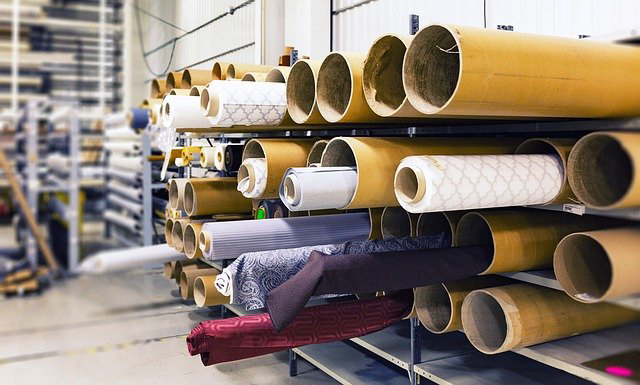


BHUMI TEST HOUSE provides Textile Fabric Garments Yarn Thread Testing facilities.
BREAKING LOAD:- The maximum force in Newton required to break the fabric.
ELONGATION:- The difference between the length of a stretched specimen at breaking load and its initial length usually expressed as a percentage of the latter.
TEAR RESISTANCE:- The force in Newton required to tear a specimen.
BURSTING STRENGTH: – The maximum fluid pressure is applied to a circular specimen for distending it to rupture.
FLAMMABILITY:- The characteristics of a material which pertain to its relative ease of ignition & relative ability to sustain combustion.
MASS PER UNIT AREA:- It can be defined as the mass in gram of one square metre of fabric.
THREADS COUNT:- It can be defined as the number of threads in per unit length of fabric.
DIMENSIONAL CHANGE OF FABRIC:- The increase or decrease in dimensions that occur in the fabric or garments after the material is soaked in water and agitated for a short period under specified condition, expressed as a percentage of the corresponding dimension before the treatment.
DIMENSIONAL CHANGE OF FABRIC (other than wool):- All woven and knitted fabrics change in dimensions on soaking in water without agitation.
Cotton Count System – The linear density of cotton yarn expressed as the number of 768.1m hanks per 453.6 gm.Tex System – It can be defined as the mass in gram of 1 kilometre of yarn.
CRIMP:- The difference between the straightened length of yarn and the length of yarn while in the cloth expressed as a percentage of the latter.
TWIST:- It can be defined as the number of turns about the axis of yarn based on its nominal gauge length before untwisting. It should be preferably expressed as the turn per meter.
COLOUR FASTNESS:- The fastness is assessed by comparing the change in colour of a treated specimen to the original sample of the fabric.
Colour Fastness to Daylight:– A specimen of textile material is exposed to daylight under the prescribed conditions along with the standard patterns. The fastness is assessed by comparing the change in colour with that of the standard pattern
Colour Fastness to Washing:– A specimen in contact with one or two specified adjacent fabrics is mechanically agitated under a specified time and temperature in soap or soap & soda solution then rinsed and dried. The change in colour of the specimen is assessed with reference to the original fabric with the greyscale.
Colour Fastness to Organic Solvent:- A specimen in contact with adjacent fabric is agitated in an organic solvent, which is commonly used in cleaning or mill processing under specified conditions. The change in colour of the specimen is assessed with the original fabric with the greyscale.
Colour Fastness to Perspiration:- The specimens in contact with two different solutions containing histidine, drained and placed between two plates under a specified pressure in the testing device. The change in colour of the specimen is assessed with the original fabric with the greyscale.
Colour Fastness to Bleaching:- A specimen is agitated in a solution of Sodium Hypochlorite, rinsed in water, agitated in a Hydrogen peroxide solution, rinsed and dried. The change in colour is assessed with the original fabric with the greyscale.
IDENTIFICATION OF FIBRES:- Fibre identification is an important step in predicting the behaviour of a textile artefact in various environments. Knowing the identity of the fibre(s) is also helpful in planning appropriate conservation treatment(s) and/or storage methods.
BLEND COMPOSITION:- To find out the number of different fibres in the sample.
CHLORIDE AND SULPHATE:- In textile industries, textile material undergoes various treatments in course of which, an extraneous matter of various type as sizing or finish material water-soluble salt (chlorides & sulphates) is gathered by or added to textile materials. Such water-soluble substances, if present in more than certain quantities, may have deleterious effects on the fibrous material.
FATTY MATTER CONTENT:- The sample is extracted with the solvent, which is dried and the residue is expressed as fatty matter.
MOISTURE CONTENT:- When the sample of textile in any form such as yarn, fibre and fabric dried at 105°C, the loss in weight is expressed as the moisture content of the sample.
ASH CONTENT:- When the textile in any form such as yarn, fibre and fabric (which is dried previously) is ignited under prescribed condition, then the residue left is expressed as the Ash content of the specimen.
IRON & CHROMIUM:– Iron and Chromium are present in large quantities in textile; dyed in mineral Khaki; mineral khaki dyed material is used mainly for defence and civilians as well for making uniforms. The Iron & Chromium content of the fabric would give an indication regarding the amount of mineral khaki present in the textile material.
SOLVENT SOLUBLE MATTER:- A known amount of specimen extract with ethyl ether or benzene methanol mixture as a solvent. A solvent is dried and the residue is expressed as the percentage of the weight of the textile material.
pH VALUE OF WATER EXTRACT:- The pH of aqueous extract of the textile affords a useful index to its processing history. In addition, it is becoming more common to demand that the textile in its various forms, shall conform to certain limits in respect of its acidity or alkalinity, often expressed in terms of pH values of aqueous extracts.
SCOURING LOSS:- In the cotton textile industries, yarn and fabrics undergo treatments in the course of which extraneous matter of various type is gathered by or added to the original material, which if not scoured or partly scoured may also contain natural impurities such as oil, fats, waxes and pectins.
Formaldehyde in Textiles Formaldehyde is released by some textile finishes, such as those conferring crease-resistance, while the garment is new. These finishes are most likely to be used on fabrics that otherwise crease easily, such as cotton or wool. Formaldehyde is very water-soluble, and washing the new garments before wearing will generally reduce the amount of formaldehyde released from the fabric. and many other parameters.